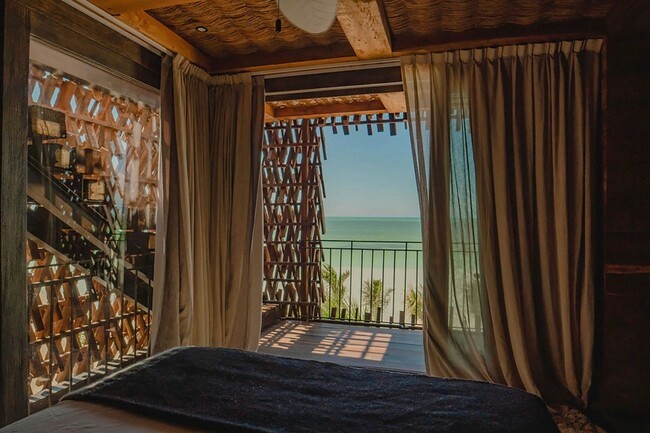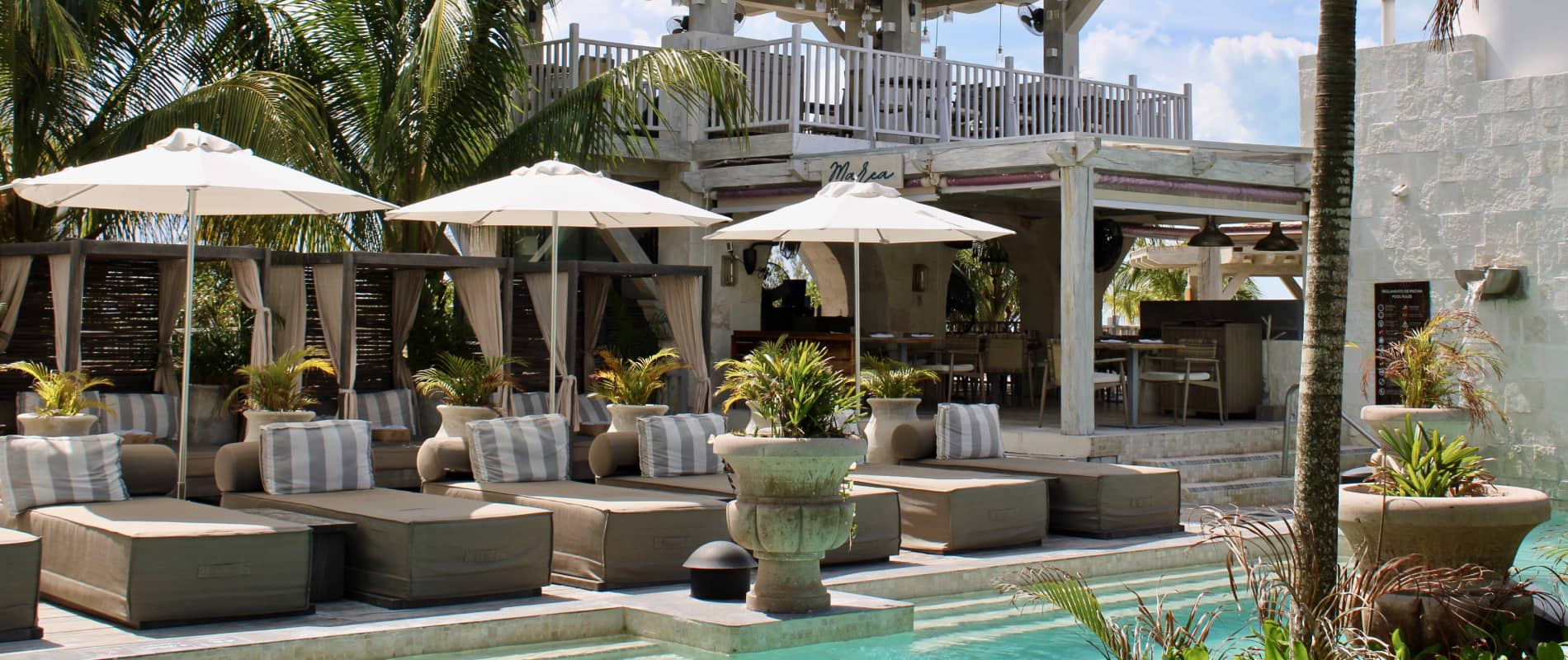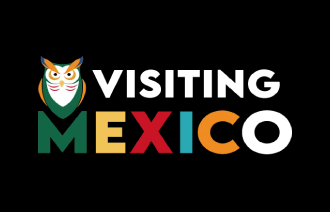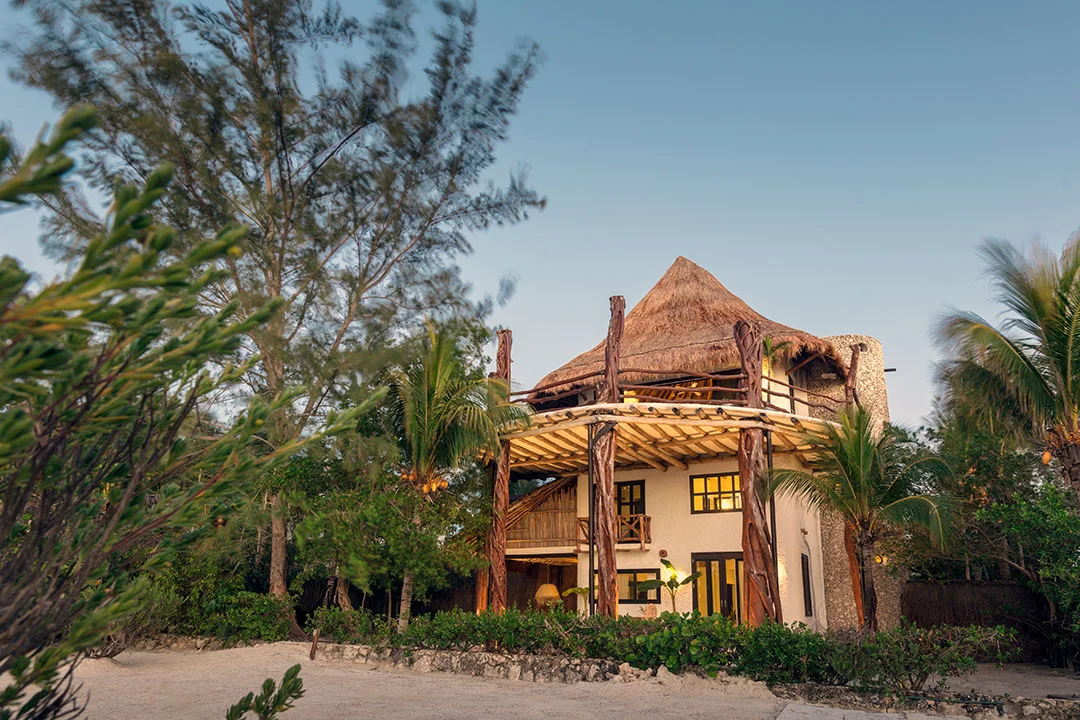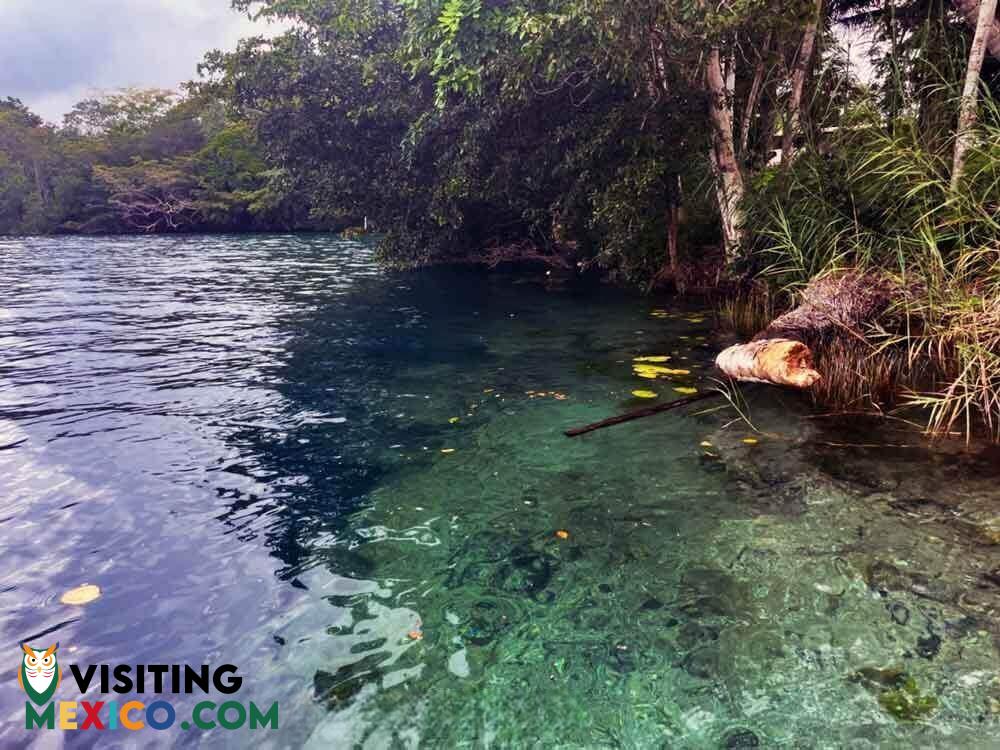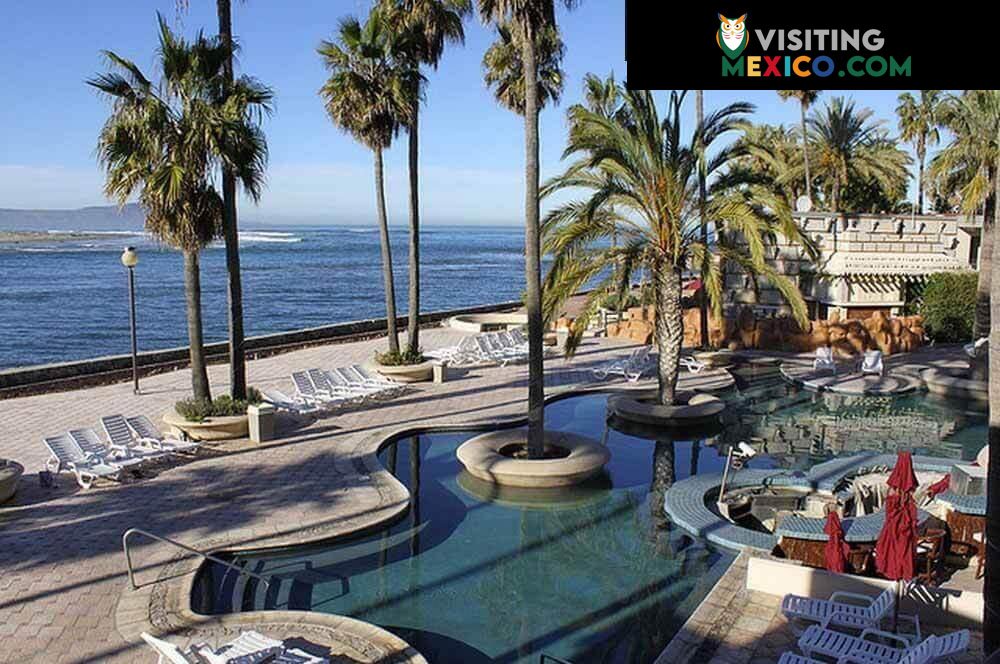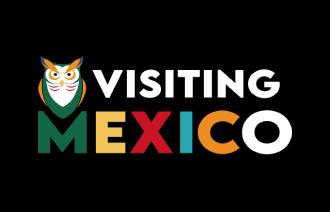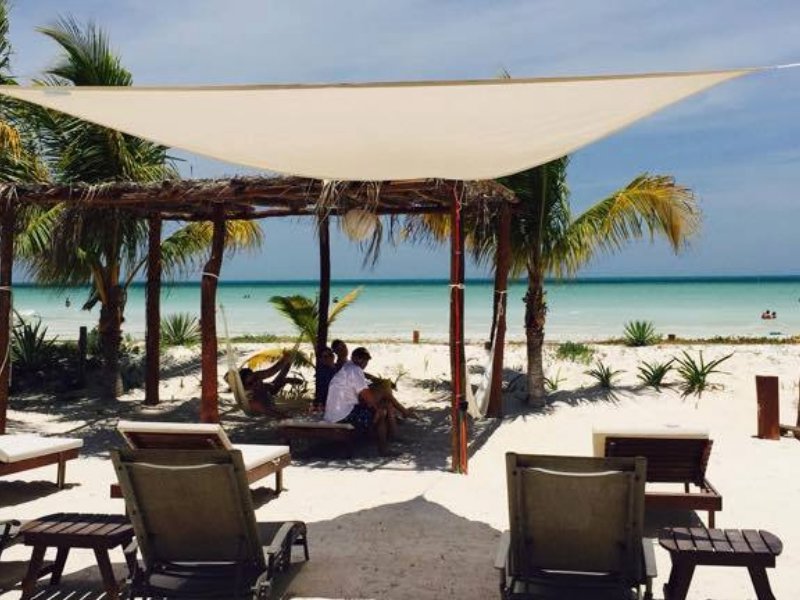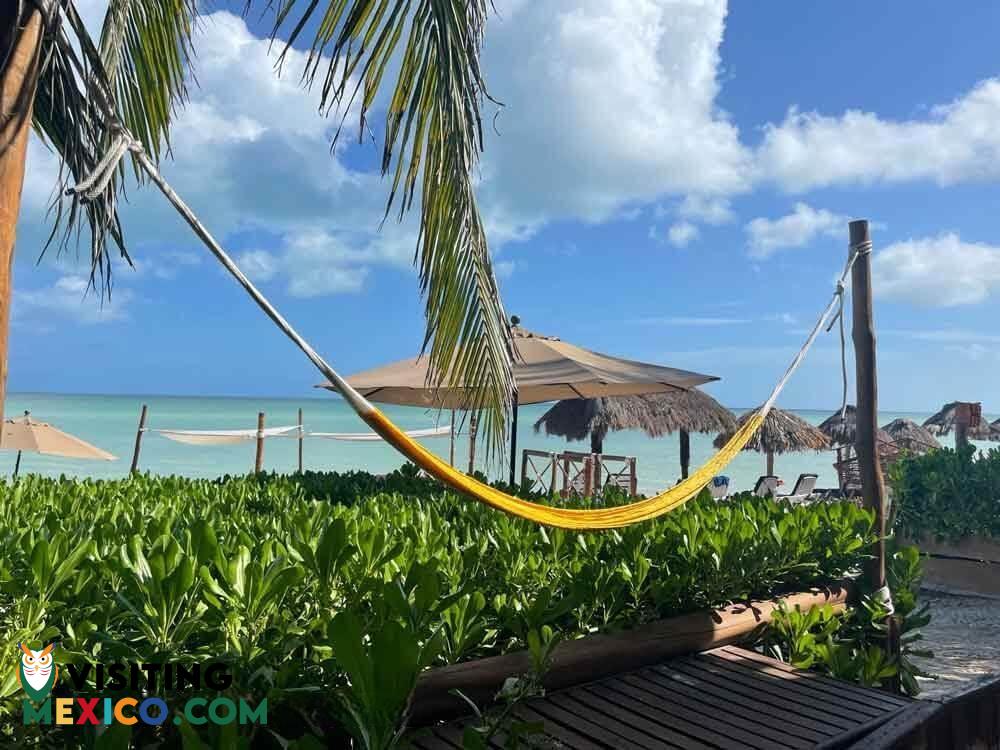
Check out the best way to get to there!
HISTORY
During the Mayan Rebellion, also known as the Caste Wars, settlers from nearby cities took refuge in the islands nearby, one of them being Holbox. In 1854, the island of Holbox was officially recognized. Settlers stayed even through two different hurricanes destroying the island. On November 24, 1902, the Yucatan was split up and Holbox was put in the state of Quintana Roo. After the Mexican Revolution, the lumber companies closed, leaving mostly fishermen on the island.
TOURISM
Holbox is an up-and-coming tourist location. It greatly values wildlife preservation but allows for a certain amount of tourism. Due to the limited amount of unprotected land on Holbox, it only allows for a certain amount of infrastructure. The community makes sure to keep a balance between tourism and the environment. This makes it a unique destination. Holbox allows for a certain type of tourism: people looking to have experience with wildlife, whether it be birds, fish, or Whale Sharks.
There are no cars on the island, so the only mode of transportation is golf carts. You can utilize the many taxi golf carts available, which have very reasonable rates or you can rent one yourself. You can also rent bicycles. Something to keep in mind is that the sand is very similar to silt and can be messy. The roads can flood, so be mindful when walking, riding, or driving around the island. To rent a golf cart or a bike, there are many shops around the island, mainly close to the dock. The general rate is $15 an hour or $100 for 24 hours to rent a golf cart. If you want to mainly use taxis, it is a good idea to get the numbers of some of the taxi drivers, so you can call them to pick you up. Your hotel might also have its own contacts.
Holbox, a charming island off the coast of Mexico’s Yucatán Peninsula, offers a unique culinary experience that reflects its coastal location and local culture. Here are some highlights of the cuisine you can enjoy there:
SEAFOOD
- Fresh Ceviche: Often made with local fish, shrimp, or octopus, marinated in lime juice and mixed with tomatoes, onions, and cilantro.
- Tacos de Pescado: Grilled or fried fish tacos topped with fresh salsa and slaw, a must-try for beachgoers.
- Langosta (Lobster): A local delicacy, especially during the lobster season, prepared in various styles from grilled to in tacos.
TRADITIONAL DISHES
- Sopes: Thick corn tortillas topped with beans, meat, and fresh vegetables.
- Quesadillas: Made with fresh cheese and sometimes seafood, often served with salsa.
LOCAL INGREDIENTS
- Coconut: Used in desserts and drinks, highlighting the tropical vibe of the island.
- Salsas and Sauces: Various homemade salsas, often made from fresh local ingredients, accompany most meals.
SWIMMING WITH WHALE SHARKS
Swimming with the Whale Sharks is the main reason I wanted to come to Holbox. The Whale Sharks follow the plankton and the season is May to August. The reason they stay around Holbox is that many fish lay their eggs nearby. You can also do this tour from Isla Mujeres and Cancun. If you are lucky to come during this time, I highly recommend this tour.
We got picked up at our hotel around 6:30 am and met up with the crew at 7. We were provided a small breakfast there and took off to the site of the Whale Shark Reserve. The boat was tiny and we hit the ocean, full throttle. Everyone from Holbox, Isla Mujeres, and Cancun were racing to get to the reserve first. The ocean was not kind to us, and it was an incredibly bumpy 2-hour ride. I was very sore the next day. I would suggest taking Dramamine if you are prone to seasickness.
Once we arrived at the reserve, there were around 7 other boats already there. There were huge manta rays swimming around the boats. I saw the biggest manta ray I have ever seen jump out of the water. It was mind-blowing! When It was time to swim with the sharks, we could only enter 2 at a time with the guide. When it was my turn, me, guide, and my husband put on our face masks and flippers and sat on the edge of the boat. We drove around looking for manta rays and when we saw one we jumped in the water. When I looked down in the water, I could see nothing but blue. It’s the deepest water I have ever swum in. I looked to my right and saw the white face of a huge manta ray looking at me as if to say “Who are you?” He swam away pretty quickly so we got back on the boat and started looking for more sea life. All 8 of the boats have a radio, so when one person found a Whale Shark, they would alert the others and everyone would race to the coordinates.
When we found some Whale Sharks, again we put on our face masks and flippers and got ready on the boat. As we were circling the sharks trying to find the best spot to jump in, we’re sitting on the edge of the boat. Then when the right moment happens, the guide says “Go, go, go!” and we jumped in. I opened my eyes once in the water, and I came face to face with a Whale Shark. I couldn’t believe what I was seeing. As the Whale Shark swam by I pumped my legs as fast as I could to keep up with the animal. They appear to move slowly and they do, but because they are so large, it is still hard to keep up with them. Depending on how the animal behaves, you could have 30 seconds with them or 5 minutes.
Our guide told us that the ones we saw were all young males. Everything moved so fast. From jumping out of the boat to trying to keep up with the shark, you are on sensory overload. It is totally surreal. The experience was absolutely indescribable. After my two jumps, I was totally exhausted and excited to head to a small fishing camp for a snack and free time.
SNORKELING IN HOLBOX
About an hour and a half back towards Holbox, we stopped to snorkel a little bit. The sand is so fine, similar to silt, the water is pretty murky and it is difficult to see clearly when compared to the Caribbean Sea. However, it is a shallow area where you can see some corals and fish.
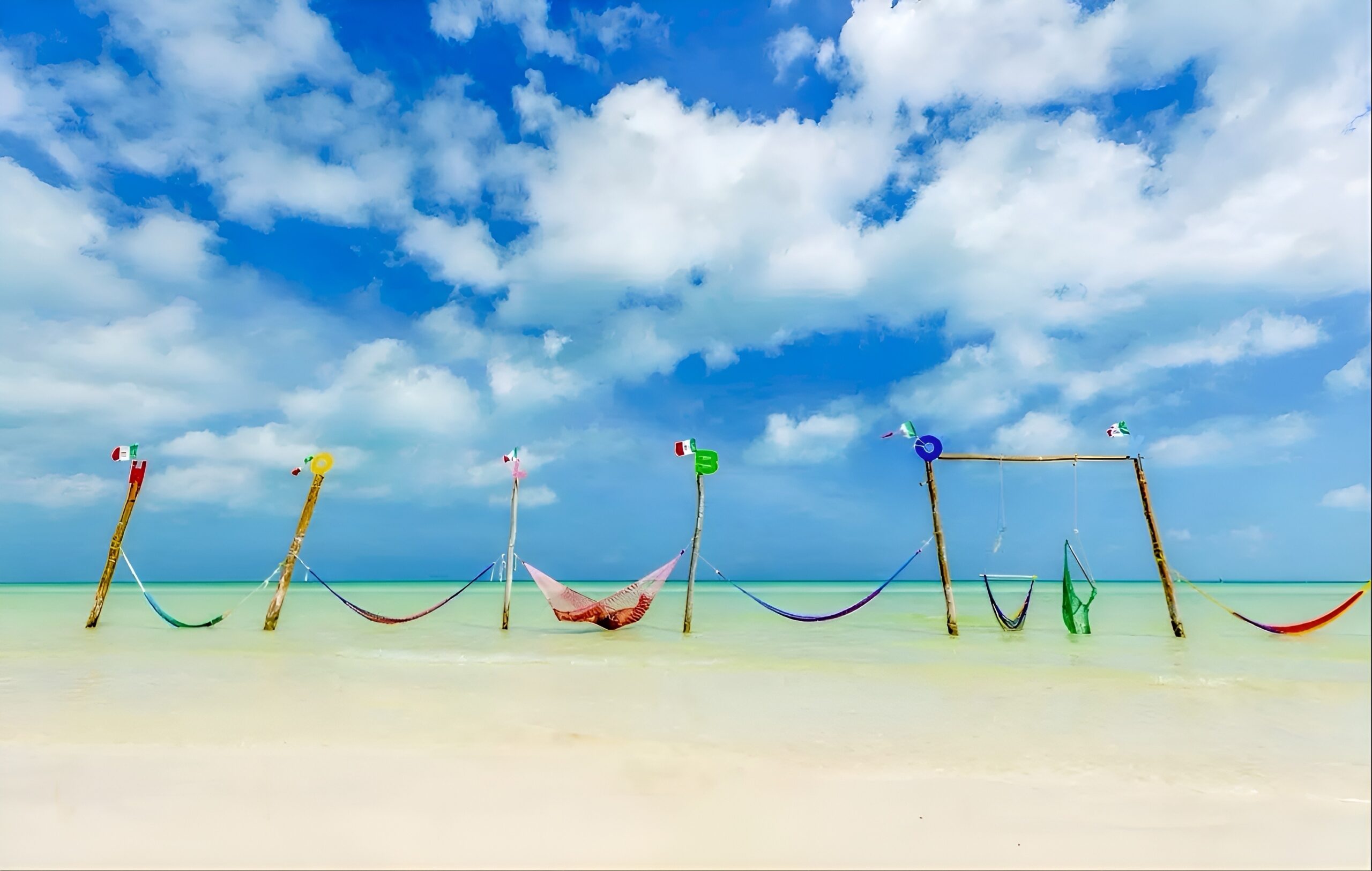
Cocolita De Gaby After a short snorkel session, we headed right over to a small fishing camp that caters to tourists on the tours. I tried their ceviche, which was actually my first time and I was pleasantly surprised. There are benches, hammocks, and of course the beach. After relaxing there for a while, we headed back to Holbox.
3 ISLAND TOUR
One of the most popular tours on the island is the 3 Island tour to see various species of birds. There are two tours daily at 10 am and 2 pm. The tour lasts around 4 hours. The three stops include Isla Pájaros (Bird Island), Yalahau Lagoon, and Passion Island. We got on a small boat that holds a maximum of 8 passengers and 2 crew members, so the ride was a little bumpy.
- Isla Pájaros Our first stop, Isla Pájaros, a bird sanctuary. You are not allowed on the protected island, but there is an observation area. I am not very good at identifying bird species, but my favorite one I saw was a red egret. There were also white egrets and pelicans. I could see many other birds flying above the island and nesting in the trees.
- Yalahau Lagoon We headed to the Yalahau Lagoon, which is actually a freshwater lagoon that comes from an Ojo de Agua, a natural freshwater spring in the ocean. It is said that the pirates fought over this freshwater source. When we arrived at the island we had to pay 50 pesos, 2.5 USD, to enter. We were allotted 1 hour in this area to spend as we pleased. There is the lagoon of course as well as an observation tower, and a restaurant, with a bathroom. When we got to the island I was pleasantly surprised to find many kinds of crabs inhabiting the island. There were fiddler crabs, blue crabs, and mango crabs. I was so intrigued! After watching the crabs for a while, I went up to the observation tower, where I got an amazing view of the lagoon and the rest of the surrounding plain. Then I enjoyed my first Michelada, a beer cocktail, at the restaurant. After relaxing for a while, we headed back to the boat.
- Passion Island The third island, Island Passion, is where flamingos often are, however, we did not get to see any. Our guide said the flamingos move often, so their movements are hard to predict. Holbox is a hotspot for flamingos, because of the presence of the algae they require. I went up to the observation tower and got to enjoy more birds. I spotted some nests and got to take some great pictures. Then we headed back on the boat to Holbox. Click here for the post on getting to Holbox.
DRIVING FROM CANCUN TO HOLBOX
Of course leaving Cancun is not easy but from Cancun to Holbox is worth it. What an incredible place with protected land allowing visitors to see spectacular birds and other animals. This is haven for those interested in animals of the sea and air. Plan your trip to Holbox with confidence using our suggested itineraries.
Driving from Cancun to Holbox requires a two-hour drive to Chiquila and then a short ferry ride to the Island Holbox. Ferries run every half hour, so you don’t have to worry about what time you will arrive in Chiquila.
DONT FORGET TO GAS UP BEFORE YOUR TRIP
Leaving Cancun, You will drive about 14 kilometers away from the city, before veering left towards Holbox. Make sure to get gas before you take this turn off because the next gas station isn’t for about 40km. Once you veer left, there probably won’t be much traffic. The road is a very straight two-lane road surrounded by trees and bushes. Once you start seeing signs for the Cuota (toll road), pay close attention, because the signs can get very confusing. Make sure to continue following the signs for Holbox. After going through the toll you will again be on a two-lane road with trees and bushes on each side. You will eventually come upon a town called Kantunilkín. There are a couple of gas stations here as well as small restaurants and artisan shops along the road. Pass through this town and be mindful of the topes (speedbumps) because they are often unmarked and hard to see. After this town, the road becomes less taken care of. Go slower on this road and be mindful of potholes. Once you get to Chiquila, go to the very end of the road, towards the dock.
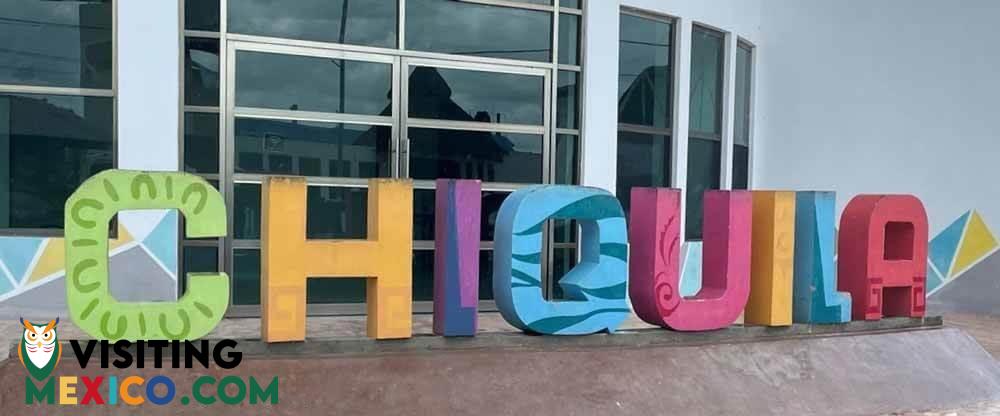
CANCUN TO HOLBOX: THE TOLL ROAD
When you come up to the first ticket booth, you will press a button and it will give you a ticket. Only a short distance later you will come upon another ticket booth where you will pay. In my pickup truck, I paid 176 pesos, which is about $9. You will need cash for this transaction and if you are returning to Cancun after your visit, you will need to pay this again upon your return. After you pay your toll, you will be given another ticket. This ticket is very important because it is your insurance in case you are in an accident on the toll road.
CANCUN TO HOLBOX: THE FERRY RIDE
There are two places to buy tickets. From my experience, the prices were the same. I chose based on which boat would be leaving the soonest. One company left every hour on the hour, while the other company left every hour on the half-hour. Once I purchased my ticket I sat in a designated waiting area. Thankfully there is a little snack shop by the waiting area so I was able to get a drink while I waited for the boat to arrive. The boat has a bottom air-conditioned section and a roof top section. I had to ride in the rooftop section because pets are not allowed in the cabin. If you want to sit in the air-conditioned section, be sure to get in the front of the line because those seats go first. The ride is only about 15 minutes. Our boat was supposed to leave at 3:30 and we got off the boat by 4 pm. If you have big luggage, the workers will ask you for it and they will load it onto the boat in a storage area and offload it once you arrive in Holbox.
Plan a trip to Campeche
